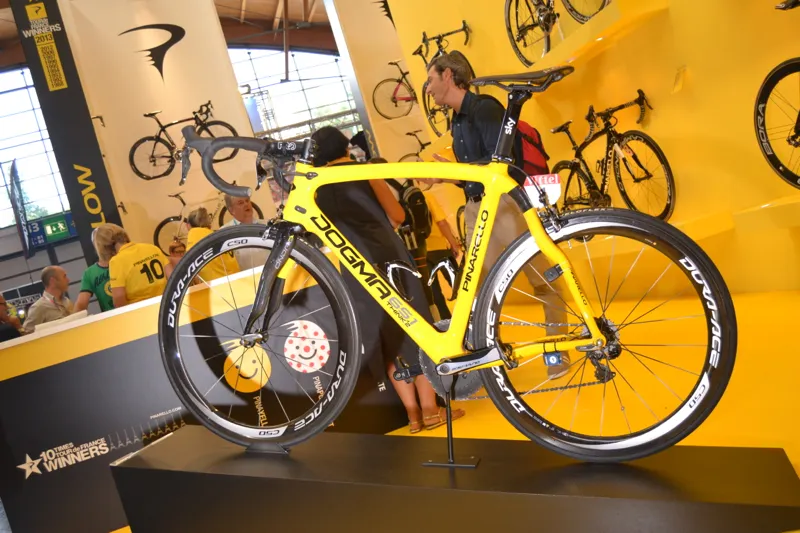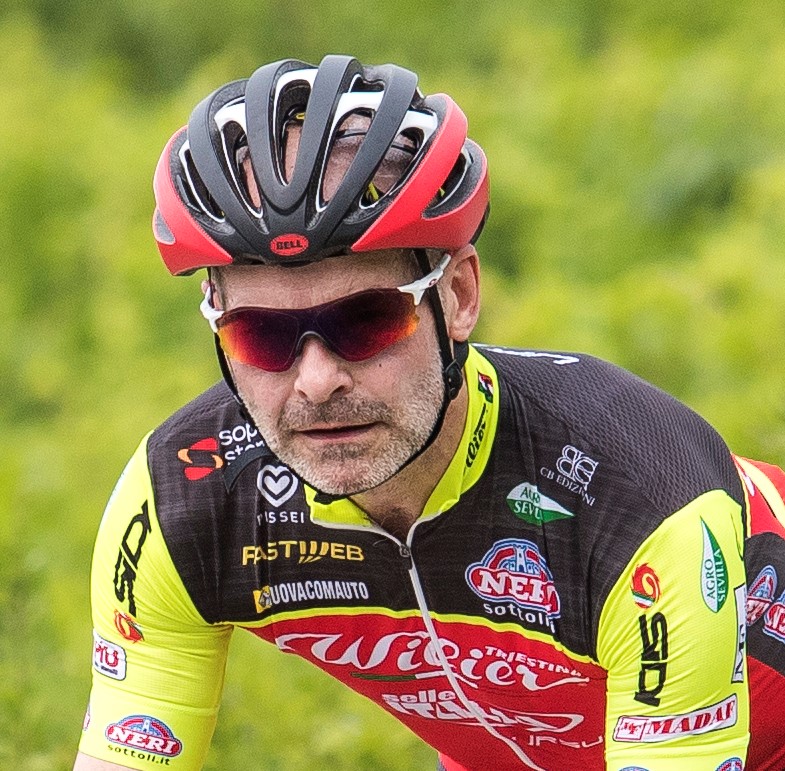A lot has changed since 1903 when the first Tour de France was held, not least the bikes ridden by the competitors. Back then, most roads weren't paved and riders had to be self-supported.
Derailleur gears didn't make an appearance until 1937; before then, a gear change meant unscrewing the rear wheel and flipping it around to engage a different gear ratio. There was no freewheel and there were no brakes either.
Here's a look at how Tour de France bikes have changed over the years.
Maurice Garin's inaugural Tour de France-winning bike

When Maurice Garin won the inaugural Tour de France in 1903, bikes were made of steel and typically weighed around 16kg. There were no gears, no brakes and no freewheel, and wheel rims were often made of wood.
Roads were gravel or cobbles. To preserve stability, the bikes' wheelbases were long and the angles low, a bit like a modern gravel bike, as were the shallow-drop handlebars. A leather saddle added a (very) small dose of comfort.
Garin's winning speed for the six-stage, 2,428km parcours (yes, that's a 406km average stage length) was 25.7km/h – pretty mind-boggling for the tech of the day.
Gino Bartali's 1938 winning bike had a derailleur

Gino Bartali won the Tour de France in 1938 and 1948, straddling the Second World War.
Derailleur gears were allowed in the Tour de France in 1937 and Bartali's Legnano bike had only three speeds, selected via a lever attached to the bottom of the seat tube, with chain tension assured by a jockey wheel under the chainstay.
Otherwise, some of the features of more modern road bikes were there, such as thin steel tubing, side-pull rim brakes and wheels fitted with quick-release skewers, invented in 1927 by Tullio Campagnolo.
Modernity with Jacques Anquetil

By the time Jacques Anquetil won his first of five Tours de France in 1957, bikes had evolved to look much more like modern road bikes.
A double crankset, although with chainrings that were much closer in size than on a modern bike, was paired with derailleur gears with five speeds and unindexed down-tube shifters. Campagnolo was the dominant brand during Anquetil's era.
Anquetil's frame and fork – he rode bikes from Gitane and Helyett – were still made of steel, although butting (where the tubes would be made thinner in areas to save weight) would have made the frame tubes lighter.
Wheels had begun to be built with (relatively) lightweight alloy rims, with glued-on tubular tyres and quick-release hubs. Centre-pull brakes provided more uniform stopping power, but the saddle continued to be made of leather and full bike weight would have been around 12kg.
Eddy Merckx – creeping forwards

By the 1970s, when Merckx was in his prime, bikes hadn't changed that much from those ridden by Anquetil.
Merckx's orange bikes carried his own name on the down tube, although they were made in Italy by De Rosa. The frame and fork were still steel and had the classic horizontal top tube and minimal seatpost extension.
Towards the end of his career, groupsets offered six speeds and there was a greater size difference between the chainrings, although climbs were still grinding due to the limited gear spread.
Notably, brakes had swapped to single-pivot side-pull, which were lighter but trickier to keep working well. Campagnolo still ruled the pro-drivetrain roost.
Bernard Hinault and the vanguard of a new tech age

Bernard Hinault's Gitane, on which he won the first of five Tours de France in 1978, carried the design features of the bikes ridden by Anquetil and Merckx. A steel frame was paired with lightweight alloy quick-release wheels and a Campagnolo drivetrain with unindexed down-tube shifters.
Things really began to change during the 1980s, though, with Look's PP65 clipless pedals replacing toe clips and straps when Hinault won his last Tour in 1985.
But perhaps more than Hinault, it was his teammate and rival Greg LeMond who ushered in new tech. He rode the carbon/Kevlar Look KG86 bike to victory in 1986 and won the final-stage time trial in 1989, snatching the overall win from Laurent Fignon by 8 seconds in large part thanks to pioneering aero bar extensions, a time-trial specific helmet and an aerodynamic disc rear wheel.
Lance Armstrong's Trek Madone and carbon rims

It was another American, Lance Armstrong, who was the harbinger of the modern road bike though. Certainly, his later bikes all look similar to the blueprint we see today.
His 1992 Trek 5500 came with an unlugged carbon frame and Shimano Dura-Ace 9-speed groupset with STI combined brake/shift levers and indexed shifting. By now, Shimano was the key groupset player, with Campagnolo less prominent and SRAM a relative newcomer.
By 2005, Trek had named its race bike the Madone in honour of Armstrong's favourite training col, and he was riding deep-section carbon tubular wheels and Shimano clipless pedals.
Chris Froome (and co) sticking it out with rim brakes

Chris Froome won the 2013 Tour de France on the Pinarello Dogma 65.1 Think 2. Its wavy profile and asymmetric frame were aimed at delivering stiffness and responsiveness, combined with some comfort.
It was the next year's Dogma F8 that brought aerodynamics to the Dogma party, though, and defined a shape that continues to the Dogma F of the present day. However, Froome crashed out of the 2014 Tour and it wasn't until the following year that the Dogma F series began its winning streak.
Rim brakes and tubular tyres still ruled the top step, of course, thanks to the Team Sky/Ineos Pinarellos and the 2020 Tour-winning Colnago V3Rs of Tadej Pogačar sticking it out despite the ever-wider adoption of disc brakes in the pro peloton.
Tadej Pogačar – a new standard setter

This brings us to the present day, or at least last year's Colnago V4Rs, ridden to victory by Pogačar. Tubeless Continental Grand Prix 5000 S TR tyres on ENVE's wide SES 4.5 wheelset dominated the setup and Pogačar's team had swapped from Campagnolo to Shimano gearing.
For 2025, the team has both the lighter Colnago V5Rs and the aero Y1Rs at its disposal. Will Pogačar ride his quiver of Colnagos to his fourth Tour de France victory?
More from the Tour de France
- Over 50kph for 174km: how is the Tour de France so fast?
- 12 ways a Tour de France bike differs from yours
- Mathieu van der Poel’s custom yellow Canyon Aeroad CFR
- 'If Pogačar has a life-changing injury, we will have blood on our hands'
- Brailsford's battle: Ineos Grenadiers are 'feeding on scraps' and have no bike deal for 2026
